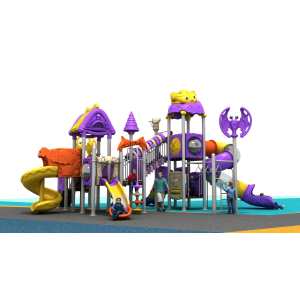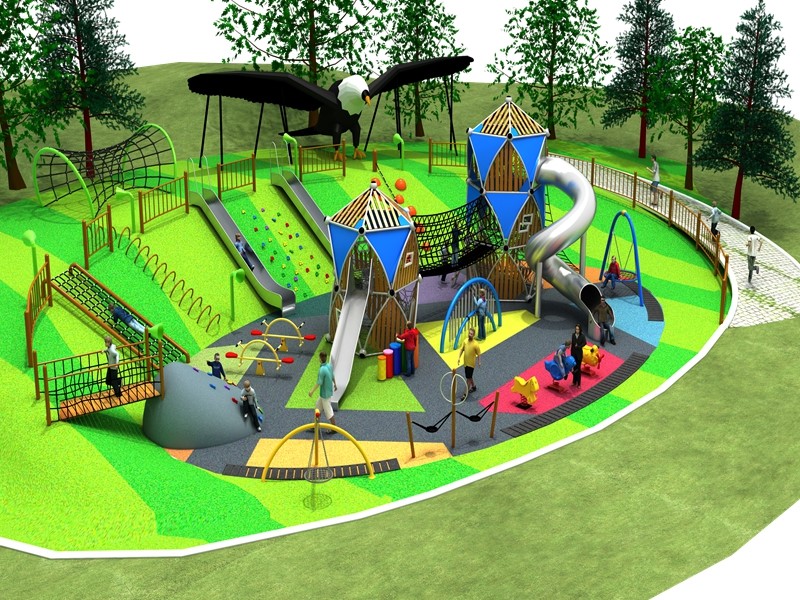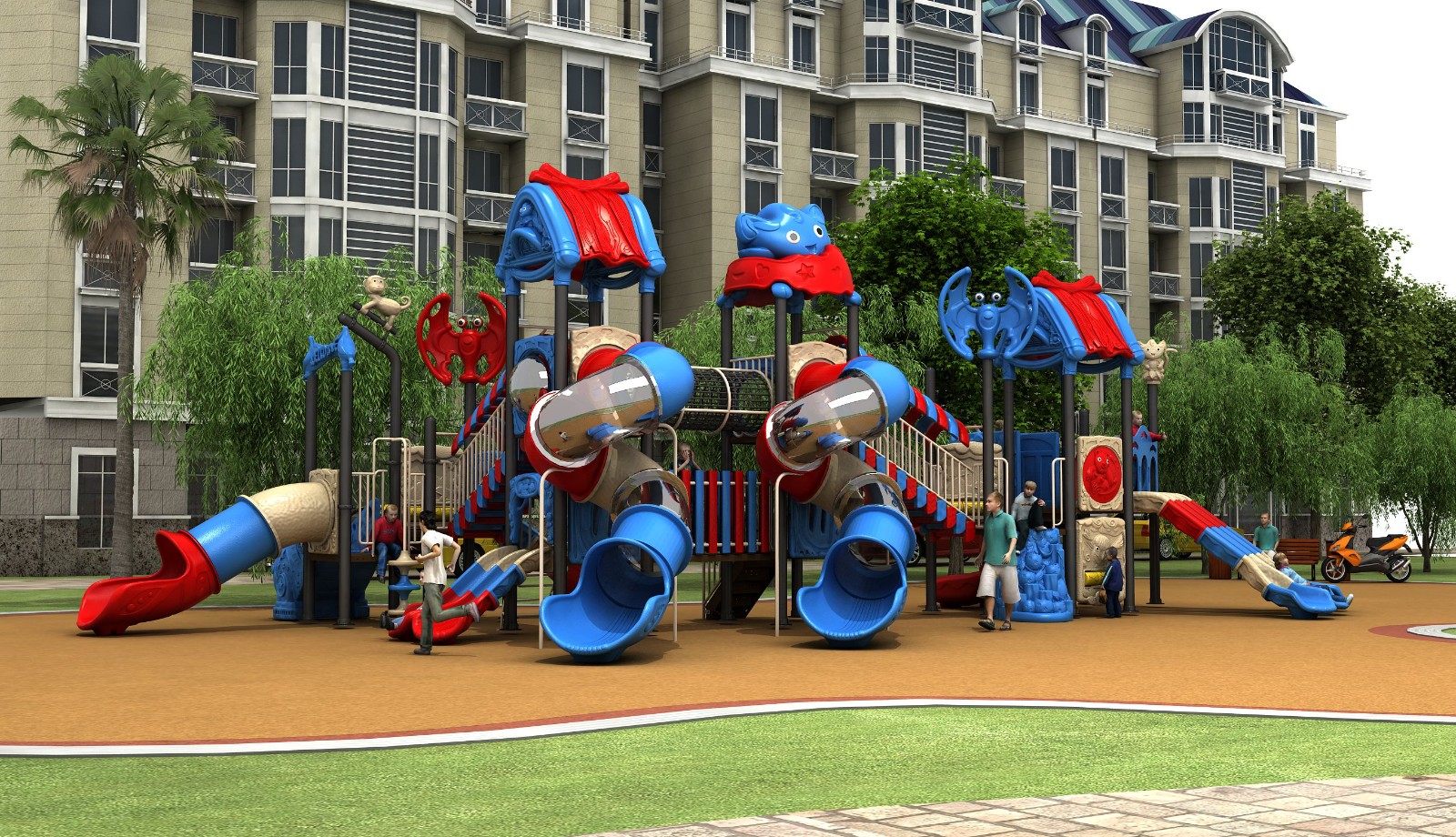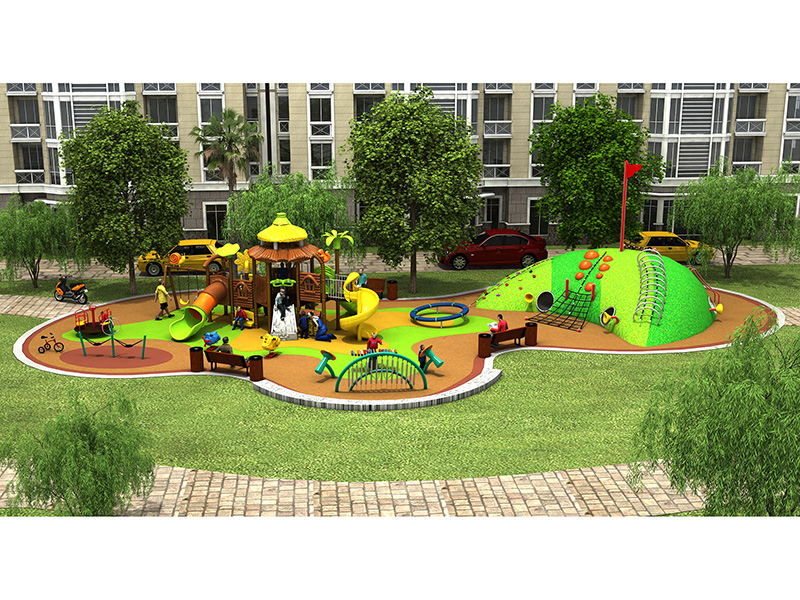Please contact us!
Commercial outdoor play park design for school
Categories:Outdoor playground
Size(CM):
Price:$0USD
Play Events
We're here to break the process down into five steps to help simplify playground planning so you can create a beautiful play area for your students.
Children are attracted to a number of different colors, shapes, and play options when it comes to school playground equipment. So, how do you design a playground that will appeal to as many kids as possible? To plan your school’s new playground, it’s important to know the steps of the planning process, as well as the aspects of a well-designed playground. With this knowledge, you’ll have the necessary tools to design an effective playground for all your students.
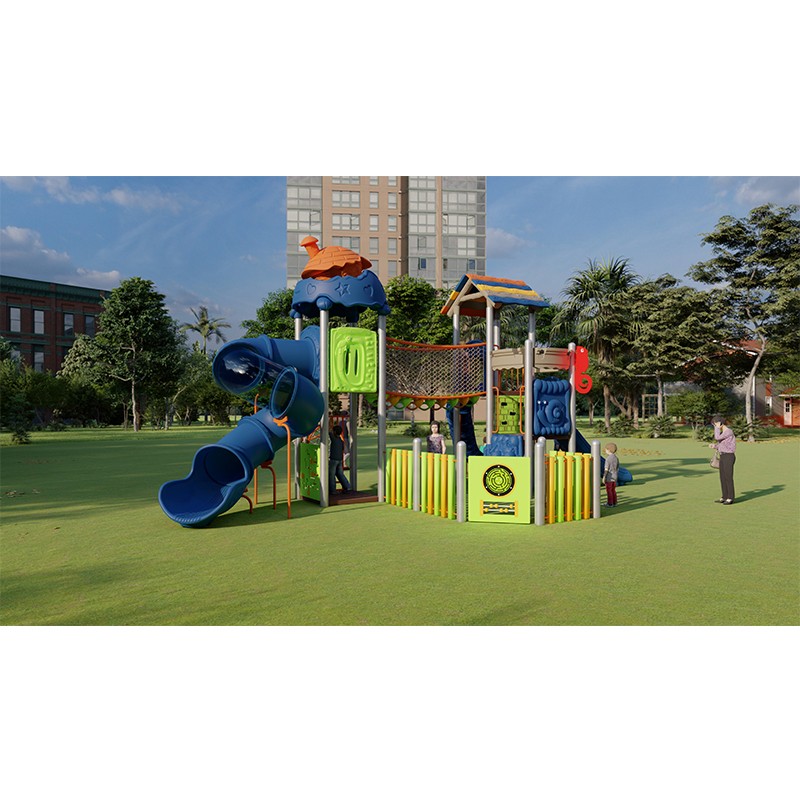
5 STEPS FOR PLAYGROUND PLANNING
As you begin to think about a new school playground, you may realize there is a lot to do and think about in terms of design and planning. The process can be overwhelming, and you may not know where to start, especially if it’s your first time designing a playground. We’re here to break the process down into five steps to help simplify playground planning so you can create a beautiful play area for your students.
1. Define Your Objectives
To stay organized and focused throughout the planning and installation process, it’s best to define the objectives and goals for the playground. This step is a great place to start because it helps you envision what you want the playground to do and be for its users. You may consider questions like:
How many students will be playing at the same time?
What ability levels and age groups will use the playground?
What amenities — bathrooms, benches, shade, trashcans — will you need?
Will you use a theme, school colors, or other characteristics of the school or your community in the playground design?
Will there be one playground for all the students or two — one for older grades and one for younger grades?
Will you keep the playground open to the community after school hours or on weekends?
What will your budget be, and how will you raise those funds?
Use this time to determine who will be involved with the process. Asking for input from the community or the student body can help you get a better idea of what the users want out of the playground. We recommend asking the head of your maintenance department as well as the physical education teacher or physical therapist to sit on the committee. These individuals can provide valuable insight toward equipment cleaning and maintenance, as well as student health while playing.
You may also consider enlisting the help of a landscape architect or playground consultant who can help you meet safety and accessibility guidelines. Help from professionals will instill you with confidence in the playground you’re planning throughout the entire process.
2. Analyze the Potential Site
Whether you’re starting from scratch or are replacing an existing playground, you’ll likely have an area designated where you want the playground to be. After you define your project’s objectives, the potential playground site needs to be analyzed. The artificial and natural elements in and around your site can have a big impact on your playground, and it’s usually easier — and more affordable — to work with the existing elements instead of against them.
This time lets you determine how these elements might work into the school playground design or what may need to be removed. When analyzing your playground site, consider the following questions:
Is the site in a location that receives direct sun during the afternoon or high levels of rain, snow, or wind?
Are you able to incorporate existing vegetation into your design?
Will your site’s soil conditions and slope angle provide the playground with proper drainage?
Is the site located near existing walkways or buildings for easy access?
With these considerations in mind prior to the design stage, you’ll be better prepared to create an effective playground.
3. Design the Playground
Now that you’ve determined your school’s playground needs and how a playground will work into your site, you can create a budget and work on the design stage. There are a lot of considerations to make when it comes to the design elements of your playground because there is such a wide variety of school playground equipment. Some things to begin thinking about include:
Will you include inclusive elements like sensory play, parallel play, pretend play, ramps, and music?
What kind of look do you want your playground to have?
Which play elements do you want to be free-standing?
Will you separate areas based on age groups?
How much challenge will you incorporate into each area?
What type of surfacing should the playground have?
You’ll need to determine what play elements you want for your playground. For example, will you have swings, monkey bars, slides, jungle gyms, activity panels, a sandbox, or perhaps something entirely different and unique to your playground? The elements you choose will largely depend on the age groups you’re creating a play space for, as well as the size of your playground site and budget. Be sure to consider the layout of your playground and how each component will fit into the site, especially in relation to other components.
4. Install the Playground
After you’ve chosen the equipment pieces that will become your school playground, it’s finally time to install it! So, who installs your playground? Most of the time, you have some options. The recommended way to install new playground equipment is with a certified installer. Hiring an expert ensures your playground is installed correctly and safely.
Some schools recruit volunteers from the community or school faculty to help assemble and install the playground equipment. Getting help from volunteers can help reduce the installation costs of your playground. Any chance to reduce costs can be extremely effective for your budget. This option can also be a way to bring community members together to show school pride.
Regardless of who installs your playground, it’s best to schedule a safety audit.
5. Maintain and Play
Before students can begin playing on the new playground, it’s best to schedule a safety audit with a certified playground safety inspector (CPSI). Find a CPSI to conduct a one-time audit to ensure the equipment was put together properly to ensure student safety. After the equipment is deemed safe, your school can begin to enjoy its new playground!
While most commercial playground equipment is manufactured with durable materials, part of your playground planning should include preventive maintenance. Preventive maintenance will help you replace or repair equipment that is wearing down before the damage becomes a safety hazard. The goal here is to catch potential damage before it occurs. This measure also helps prolong your playground equipment’s life so it can last for many years to come.
PLAYGROUND DESIGN BEST PRACTICES
Playgrounds attract a wide variety of different kids, all with different interests and abilities. Designing a playground involves careful consideration to create a space that addresses as many kids’ needs as possible. Follow these school playground design best practices and implement these design aspects that help make playgrounds inclusive and effective:
Create Play Sections
Play sections, or designated play areas, can help ensure each child has space for their level of play. There are a few ways to break up your playground into play sections:
Energy level sections: You may dedicate a section of your playground for high-energy activities like sports, or climbing equipment. These activities encourage loud and active play, which would be disruptive for kids who prefer lower-energy activities like reading, drawing with chalk, or talking with friends. Designing your playground so activities with high energy levels are in separate areas from activities with lower energy levels creates an environment that welcomes all kinds of play.
Designated age areas: According to the Consumer Products Safety Commission (CPSC), playgrounds should be separated into areas based on age groups. Depending on the students your school accommodates, you likely won’t need separate spaces for kids 2 years old or younger. However, designing sections to separate older kids from younger kids can be beneficial. This separation helps prevent young kids from using equipment that’s only suitable for older students.
Sections with varying challenge levels: One of the goals of a playground is to encourage kids of various abilities to play together. To encourage this, include playground components of various challenge levels in each section. Doing so will allow kids with a variety of ability levels to play together and potentially interact.
When designing your play sections, think of ways to separate the areas while still making each space accessible to everyone. Sections should still be connected by visual and physical paths, allowing students and adults to access each one. This layout enables kids to play in different energy level areas as their preferences change and interact with kids who have different abilities from them, helping to foster empathy and understanding of differences early in life.
Frequently Asked Questions (FAQ) – Indoor Playground Equipment
- What age groups are indoor playgrounds designed for?
Indoor playgrounds can be designed for different age segments:
Toddlers (1–3 years): Soft play areas, ball pits, sensory rooms.
Children (4–12 years): Slides, climbing structures, trampolines, obstacle courses.
Teenagers & Adults: Ninja courses, trampoline parks, adventure zones (optional). - What safety standards do your playgrounds comply with?
All equipment is manufactured according to international safety standards such as:
EN1176 / EN1177 (Europe)
ASTM F1918 (USA)
CE, TUV, SGS certifications
Materials are non-toxic, durable, and tested for impact absorption, flame resistance, and stability. - What is the average cost of an indoor playground?
Costs depend on:
– Size of the playground (sqm or sq ft)
– Selected activities (trampolines, climbing walls, role-play houses, etc.)
– Customization & theme design
A small playground (100–200 m²) may start from USD 30,000–60,000, while larger projects (500–2000 m²) can range from USD 100,000–500,000+. - How long does it take to manufacture and deliver?
Design stage: 7–15 days (depending on complexity).
Production stage: 20–40 days.
Shipping: 15–45 days depending on destination port.
Total project time is usually 2–3 months. - Can I customize the design?
Yes. Every project is custom-designed to fit your space dimensions, theme, budget, and target age group.
Popular themes include: Jungle, Ocean, Space, Candy, Castle, Pirate, Cartoon, Futuristic Neon. - Do you assist with after-sales service?
Yes. Our after-sales support includes:
– 24/7 online technical support
– Free spare parts with orders
– Remote video calls for troubleshooting
– Local partner assistance in some countries
Be the first to write a review


